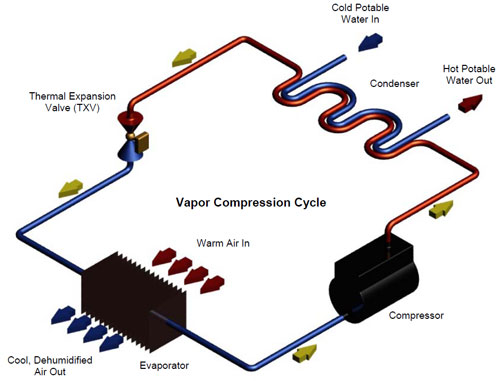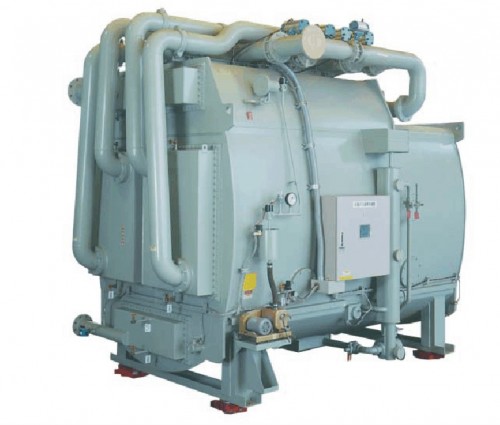New Nanomaterial Makes Adsorption Chilling Even Cooler!
So given these conditions, it will come as no surprise that researchers led by Peter McGrail out of the Pacific Northwest National Laboratory have been working a new porous nanomaterial that improves an existing process used for refrigeration and air conditioning called adsorption chilling.
Image courtesy colmaccoil.com
All refrigerators and air conditioners make the environment cooler by creating phase changes in a refrigerant so that the chemical absorbs heat. Most familiar air conditioners use electrically driven compressors to mechanically compress the vaporized refrigerant, whereas adsorption chillers use heat to condense the refrigerant. Evaporated refrigerant “adheres to a surface of a solid, such as silica gel. The silica gel can hold a large amount of water in a small space—it essentially acts as a sponge for the water vapor. When the gel is heated, it releases the water molecules into a chamber. As the concentration of water vapor in the chamber increases, the pressure rises until the water condenses” (Bullis). When that happens, heat is absorbed out of the environment and the newly cooled people rejoice!
Image courtesy emissionless.com
Historically, bulky adsorption chillers have been more expensive and far less efficient to operate than chillers that use electrical compressors. The flip side is that they are cheap to operate and, if you’re an industrial facility or power plant manager who has massive quantities of waste heat lying around, you can practically run them for free. That’s right people: absolutamente GRATIS.
The new material will make it easier to cool smaller buildings with solar water heaters or waste heat from generators by shrinking the hulking adsorption machines by 75% in size and cutting associated costs in half (Bullis). Size and cost reductions could make adsorption chillers competitive with compressor driven chillers.
The researchers’ nanomaterial consists of “nanoscopic structures that self-assemble into complex three-dimensional shapes. It’s more porous than silica gel, with a larger surface area for water molecules to cling to. As a result, it can trap three to four times more water, by weight, than silica gel, which helps reduce the size of the chiller” (Bullis). The other interesting thing about the material is that it forms weak bonds with water molecules. This is a good thing because it means less heat is required to free the molecules (or other refrigerants), making the process of adsorbing and desorbing water 50-100 times faster.
While the nanomaterial definitely makes adsorption chilling more attractive, it’s tricky to match the demand for cooling with the production of heat. For example, if you needed to run the chiller when the sun had set because you lived somewhere humid, you might need a heat storage system (and those can be expensive). Still, anytime things get more efficient a little fairy creature gets some wings!
Cited:
Bullis, Kevin. “Using Heat to Cool Buildings.” Technology Review Online. 03/30/11. Accessed 06/29/11. URL.


















Leave a Wordpress Comment: